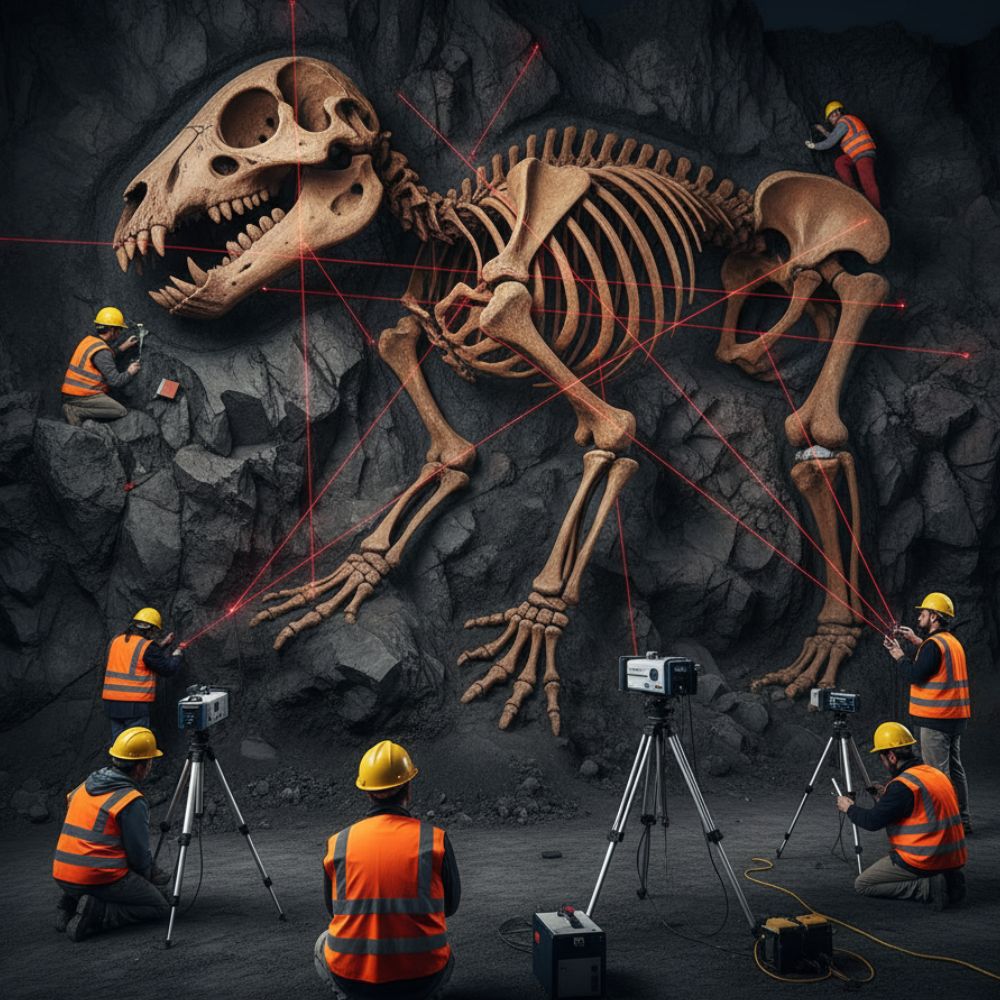Unearthing Giants: The Pangea Basin Expedition

The year was 2042. Climate shifts, once a harbinger of doom, had inadvertently become the greatest facilitator of discovery. As the glacial ice caps of the newly exposed Pangea Basin – a remote, geologically active region near what was once known as the Antarctic Peninsula – receded at an unprecedented rate, they began to reveal secrets held captive for millennia. Dr. Aris Thorne, a paleontologist whose name was synonymous with daring expeditions, stared at the satellite imagery with a mix of awe and disbelief. An anomaly, massive beyond comprehension, was clearly visible on the sheer black basalt cliffs.
“It’s… it’s too big, Aris,” his chief geologist, Dr. Lena Petrova, had whispered, her voice barely audible over the hum of the portable life support system in their base camp.
The initial ground team found it exactly as the imagery suggested: the fossilized remains of a creature so immense it defied current biological understanding. Embedded deep within the obsidian-like rock, its bones, a warm ochre against the dark cliff, stretched an astonishing seventy feet. The skull alone was the size of a small car.
Days blurred into weeks as the full Pangea Basin Expedition swung into action. The image you see now captures a pivotal moment: a late-night, high-tech phase of the excavation. The frigid Antarctic air nipped at the exposed skin of the seven-person core team, but their focus was absolute. Dressed in their signature orange high-visibility vests and yellow hard hats, they moved with a practiced ballet of scientific precision.
Red laser grids, like luminous spiderwebs, crisscrossed the colossal skeleton. These weren’t mere measuring devices; they were sophisticated 3D lidar scanners, meticulously mapping every contour of the fossil in millimeter precision. Dr. Thorne himself was crouched near the base, adjusting the focus on one of the scanning tripods, his face illuminated by its faint operational lights. Lena, nimble despite the heavy gear, was higher up on the rock face, gently brushing away millennia of compacted sediment from a colossal rib bone.
“We need every data point, people,” Thorne’s voice, calm and steady, echoed across the site. “This isn’t just a new species; this is an entirely new genus. It predates the dinosaurs, possibly even the Permian extinction event. We’re looking at a relic from a time Earth barely remembers.”
The implications were staggering. If this creature had thrived here, in what was once a radically different Pangea, it challenged long-held theories about early megafauna and continental drift. The silent, dark cliff, punctuated only by the soft whir of machinery and the focused beams of light, held the silent testimony of a forgotten world. Each laser pulse, each photograph, each careful brushstroke brought them closer to understanding the giants that once roamed a primordial Earth, echoing a question that resonated with every archaeologist and paleontologist: what other secrets lay buried beneath the shifting sands and melting ice, waiting for the opportune moment to reveal themselves? The Pangea Basin was just beginning to tell its story.
